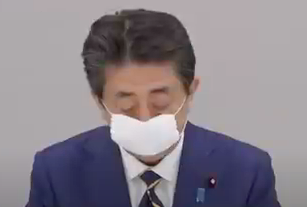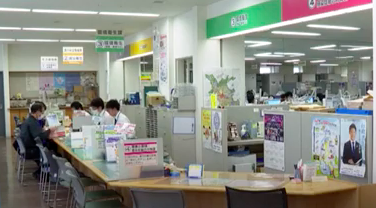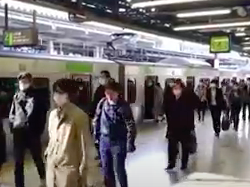Japan in full State of Emergency and the estranged coronavirus crisis
Sawako Utsumi and Lee Jay Walker
Modern Tokyo Times

The initial state of emergency called by Prime Minister Shinzo Abe is now being applied to the entire country. At first, it covered only the cities of Osaka and Tokyo along with the prefectures of Chiba, Fukuoka, Hyogo, Kanagawa, and Saitama. However, with Aichi, Hokkaido, and Kyoto insisting on greater measures then Abe was forced to act.
Thus with cases increasing in several parts of the country not covered by the state of emergency, then new measures were needed. This notably applies to Aichi, Hokkaido, and Kyoto. Despite this, some areas are perplexed because coronavirus cases are relatively low. Therefore, the reasons given to cover the entire country is causing some confusion.
Abe uttered, “Areas where a state of emergency should be carried out will be expanded from the seven prefectures to all prefectures.”
This backtracking by Abe is hardly inspiring confidence. The same applies to the slow response to the coronavirus crisis and preparations that appear limited. Therefore, with few cases in the prefecture of Niigata and other prefectures then Abe is baffling many.
Governor Hideyo Hanamizu of Niigata prefecture uttered, “Infections in our prefecture has been kept at a certain level. We are going to have to change what we have asked our people. I don’t understand this.”

In fairness to Abe, some workers abused the initial limited state of emergency. Alongside this, many infected people are refusing to inform authorities about their movements before becoming infected. Thus, Abe is responding to the selfishness of many individuals.
For example, some workers relocated outside the limited state of emergency zones and this notably applies to the entertainment sector (a euphemism for the sex trade). Therefore, this rendered the first state of emergency to be insufficient.
Shockingly, 40 percent of individuals infected with coronavirus in the past week have refused to provide information on how they caught the virus. In Tokyo, the figure is even higher. This applies to males visiting various areas of the sex industry or sexual adult bars; female and male workers who hide their real jobs; and secret relationships by husbands, wives, boyfriends, and girlfriends. Even the government expressed this, thus tracking the coronavirus trail is nigh impossible. Hence penalties must be enforced to quell the virus from spiraling out of control in certain parts of Japan.
With coronavirus entering Japan in the middle of January, then why didn’t Abe and the Tokyo Governor Yuriko Koike – and other governors – close down the sex trade area? After all, tracing the trail of coronavirus is essential along with testing.
Thus It appears that Abe and Koike were too obsessed with preventing the cancelation of the Olympics. Hence the parallel of increased cases with the postponement of the Olympics is noticeable. The same applies to the slowness to act by Abe and Koike.

With certain areas like Tokyo showing stress signs of growing infections – and Hokkaido witnessing more cases once more despite a past lockdown – then Abe was forced to increase the state of emergency. Equally, the irresponsibility of 40 percent of people not providing information to trace coronavirus, equates to Abe becoming alarmed by people moving during Golden Week.
NHK reports, “The prime minister said the government decided to expand the state of emergency nationwide to curb outbreaks in local areas and to minimize people’s exodus, particularly during the upcoming holiday period that runs from late April through early May.”
Penalties must be enforced on people not informing authorities about how they caught coronavirus. If not, then more cases will follow and the vicious cycle will continue.
However, the question remains is why Abe and Koike – and other governors – did not tighten areas of weakness earlier? Equally important, why did it take three months to act and parallel with the Olympics? After all, when coronavirus spread to other nations then it often became serious unless measures were taken immediately.
It should be noted that the death toll after three months in Japan is still extremely low. Thus less than 200 people have died from coronavirus in Japan compared with over 34,000 deaths in America. Therefore, it is surprising why hospitals are allegedly feeling overstretched in certain parts of the country. Especially with the health care sector and the government of Japan having three months to prepare for the worst-case scenario.
In other words, the coronavirus crisis in Japan is relatively unique. This is based on the Olympic intrigues of Abe and Koike; the strict criteria of having coronavirus; limited tests; people not being enforced to tell authorities about how they caught the virus; a small number of deaths after three months; the sudden spike in cases; lack of preparations of hospitals despite the longevity of coronavirus in Japan; and the growing number of deaths and infections that seem to parallel with the cancelation of the Olympics
https://www3.nhk.or.jp/nhkworld/en/news/20200417_01/

PLEASE DONATE TO HELP MODERN TOKYO TIMES
Modern Tokyo News is part of the Modern Tokyo Times group
DONATIONS to SUPPORT MODERN TOKYO TIMES – please pay PayPal and DONATE to sawakoart@gmail.com
http://moderntokyotimes.com Modern Tokyo Times – International News and Japan News
http://sawakoart.com – Sawako Utsumi personal website and Modern Tokyo Times artist
https://moderntokyonews.com Modern Tokyo News – Tokyo News and International News
PLEASE JOIN ON TWITTER
https://twitter.com/MTT_News Modern Tokyo Times
PLEASE JOIN ON FACEBOOK